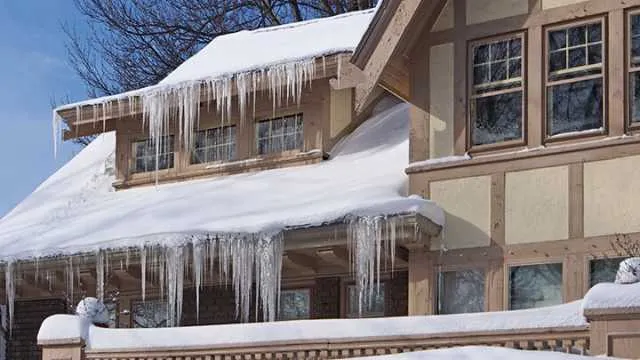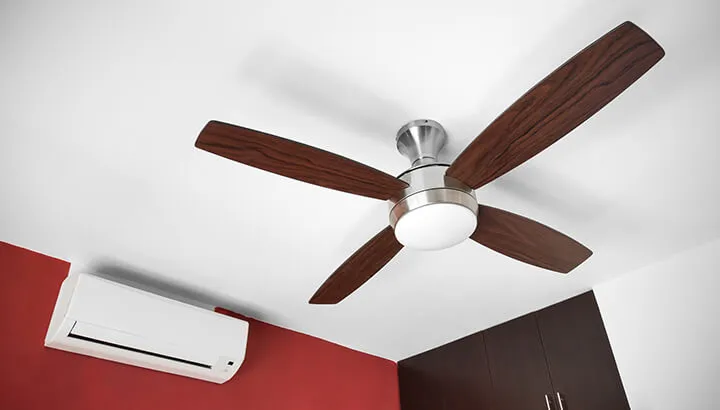
- Share on Facebook46
- Share on Pinterest
- Share on Twitter
Winter is coming. But don’t worry! Here’s how to be prepared, reduce your impact and save money in the process.
1. Smart thermostat
The most important tool in your quest to reduce your heating bill this winter (and reduce your environmental impact) is a smart thermostat. If your current thermostat doesn’t let you schedule temperature changes throughout the day, you are living in the thermostat stone ages.
A smart thermostat should allow you to schedule times of the day where your home does not need to be heated as much. These include during the day if everyone is at school or work, or at night when a cooler temperature and warm blankets often make for a good night’s sleep.
Fancier smart thermostats also contain room sensors that allow you to set different temperatures for different rooms, reducing the amount of heat used for unoccupied areas.
2. Wrap your hot water heater in a blanket
If your hot water heater is warm to touch then you can save money by insulating it. Estimates are that insulation blankets for hot water heaters prevent 25 to 45 percent of heat escaping, and can save residents close to 10 percent on their water heating bill.
You can purchase insulation blankets at most home improvement stores, but you can also go the DIY route on this one. In lieu of a fancy insulation blanket, however, you can also just use an old warm blanket, some scissors and elbow grease to knock this project out in a short amount of time with little money spent.
3. Check and tune up your furnace
Many furnace manufacturers recommend an annual furnace “tune-up,” which can run up to $200. This price tag often leaves homeowners skipping out on these recommended services.
Not having your furnace serviced can increase your heating bills, however, as an inefficient furnace is a more costly furnace.
The trick is that furnace manufacturers, like mechanics, know how little some of their customers know about furnace maintenance. This can lead to a low-quality furnace tune-up that is attached to the same hefty price tag.
Just as is recommended when going to a mechanic, throw out a few key words and questions that will communicate to the technician that you are a knowledgeable customer (even if you are not).
Just adding a few lines such as, “Can you let me know if there were any blockages or leaks in the vent system?” or “Let me know if there is any rust in that heat exchanger,” should be enough to ensure you receive greater service.
Then make a comment such as, “Glad I’m not doing that this year,” which makes it seem like you are capable of doing the whole job yourself and will be checking the technician’s work after they leave. Then quickly go upstairs before the technician finds out you don’t actually know what you are talking about.
4. Better windows
New windows are more efficient at keeping cold weather on the outside and can reduce your heating bills in the process. If you live in an older home, your windows might only be single pane, which many recommend replacing with double or even triple pane windows. The issue is that this is pretty expensive.
A solution for you might be a window insert, which offers the same draft and weather protection as newer windows, but without the pain of having to install new windows.
Another solution, if you don’t want to buy anything and want to reuse the packaging your latest techno gadget came in, is to simply wrap your windows in bubble wrap. It might not look classy but it gets the job done, and also allows you to play ball hockey in the house!
5. Ceiling fans

We all know ceiling fans can cool us down by providing a draft of manufactured air. Here is the mind-blowing part about ceiling fans, however: setting them to rotate in the opposite direction will actually free up any warm air that was trapped near the ceiling of a room.
Counterclockwise = fresh breeze in the summer
Clockwise = Free up trapped warm air in the winter
6. Keep your blinds open during the day
This seems like a simple one, but many people keep their blinds closed during the day. While this creates a sense of privacy, it also prevents the sun from helping your furnace to heat your home.
7. Home audit
Much like getting a furnace tune-up, this one involves a salesperson coming to your home, which can be rather annoying.
An entire industry of “home auditors” has developed in recent years, but you actually do not need to be afraid of the door-to-door peddlers that work in this field, just cautious.
What a home auditor does is check your furnace, hot water heater and possibly other appliances as well to see if they are old and inefficient enough for you to qualify for a government subsidy to get a new one. The government wants homeowners to purchase newer, more energy-efficient appliances and is willing to help pay for them.
The trick is that if you qualify for funding for a new appliance, the home auditor wants you to purchase it from them. You don’t need to go through their company, however, information on which appliances government incentives are available for can be found here. You can also just invite the home auditor to look at your appliances, and then kick them out once they have given you the information you need, but that’s up to you.
8. Weather stripping
Weather stripping is one of the easiest home winterizing tasks to justify financially. It costs $10 to $40 to caulk up your windows and prevent air leaks, and estimates are you can save up to $48 to $150 per year.
9. Wear warmer clothes

Wearing warmer clothing seems too simple a solution, but in many cases, getting your family accustomed to wearing more and heating less in the winter is the best way to reduce your home’s energy costs and environmental impact.
If you are the sole thermostat controller in your home (first of all, congratulations), try slowly reducing the home’s temperature and watch as your family or roommates adjust clothing-wise.
10. Evergreens near your home
Finally, planting evergreen trees on your property can serve as a “windbreaker,” reducing the amount of cold air hitting your property this winter. As a bonus, these trees can also help keep your home cool in the summer by providing shade from the sun.
— Ian Carey
- Share on Facebook46
- Share on Pinterest
- Share on Twitter

